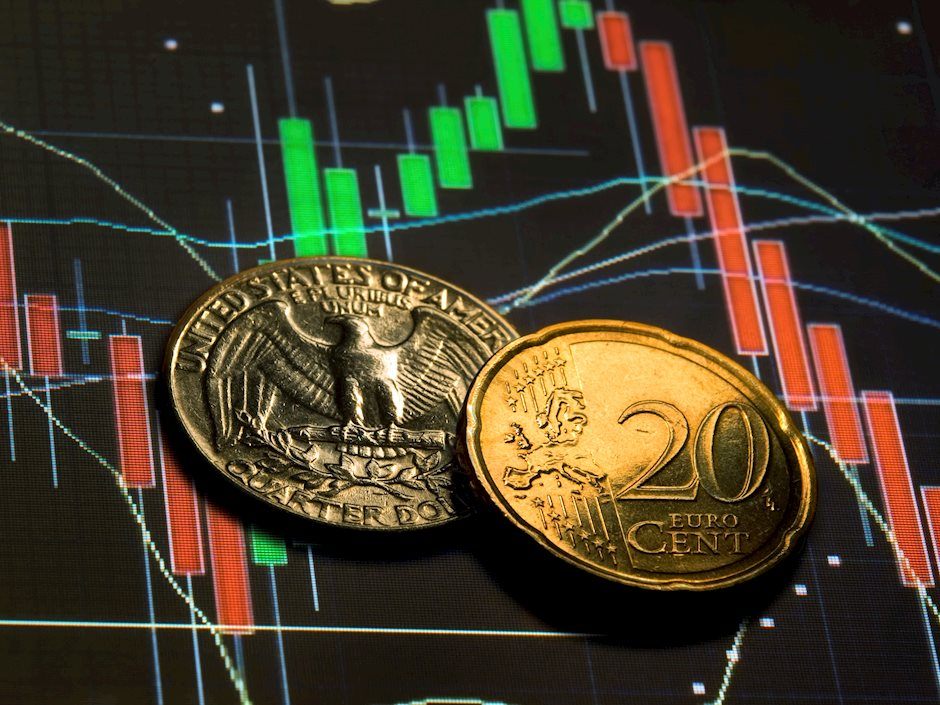EUR/USD Weekly Forecast: Bond yields shattering central banks´ plans
- Government bond yields keep ramping up despite centra banks’ measures.
- Growth imbalances in favor of the US should provide further support to the dollar.
- EUR/USD is technically bearish and heading toward the 1.1700 level.

The week ends as it started, with government bond yields soaring and the greenback following their lead. The yield on the benchmark 10-year US Treasury yield peaked at 1.62% at the beginning of the week, then retreated to as low as 1.47% mid-week. Heading into Friday’s close, the yield resumed its advance and stands at 1.62%.
The EUR/USD pair traded alongside, peaking at 1.1989 on Thursday, following the European Central Bank Monetary policy announcement, now trading around 1.1930.
Central banks and fiscal policies
The ECB decided to maintain rates and LEAVE quantitative easing unchanged, as widely anticipated but announced it would “significantly” step up the pace of bond-buying to grant financial stability. Higher yields pose a risk to the economic recovery amid rising borrowing costs. Within the current pandemic context, major economies are struggling just to remain afloat. Governmental support and ultra-loose central banks’ policies are still short of boosting economic growth. Extended lockdowns, mainly in Europe, exacerbate the slowdown in the ongoing quarter.
On fiscal policies, US President Joe Biden signed the $1.9 trillion stimulus bill into law. The American Rescue Plan includes $1,400 in direct payments to households, while state, local and tribal governments will get $ 350 billion in federal aid. $7.25 billion is destined to the Paycheck Program for loans to small businesses.
Additionally, the US President announced this Friday that he will compel all states to make the coronavirus vaccines available for all adults by May 1, aiming to reach some sort of normality by July 4. As the US speeds up coronavirus immunization, the EU still struggles with vaccines rollout. The latest on the Union is that several countries have banned the use of at least one batch of the AstraZeneca shot amid serious side effects related to blood clots. Nevertheless, multiple health authorities have stated that there is no proven connection between the inoculation of the vaccine and the adverse reactions, and the European Medical Agency has recommended continuing immunizing the population.
Focus shifts to the US Federal Reserve
German data was somehow concerning this past week. Industrial Production contracted by 3.9% YoY in January, while the Current Account in the same month posted a modest surplus of €16.9 billion. February inflation in the country posted 1.6% YoY, still subdued.
In the Euro-area, confidence seems to be improving as the March Sentix Investor Confidence improved from -0.2 to 5. However, the Q4 Gross Domestic Product was downwardly revised to -0.7% QoQ.
The US reported February inflation data, with the core annual Consumer Price Index contracting from 1.4% to 1.3%. Initial Jobless Claims for the week ended March 5 improved to 712K. Finally, the preliminary estimate of the March Michigan Consumer Sentiment Index beat expectations, printing at 83, beating the expected 78.5 and the previous 76.8.
The macroeconomic calendar will include a US Federal Reserve Monetary Policy Meeting next week. The US central bank is widely anticipated to maintain rates and stimulus programs unchanged, mainly considering the better pandemic-related situation of the US. A new concern has arisen recently - inflation. Soaring yields have triggered multiple alarms, despite US Federal Reserve chief Jerome Powell having ad nauseum that monetary policies are not linked to bond yields.
Ahead of the Fed, the US will publish February Retail Sales seen at 0% MoM after printing at 5.9% in January. Germany will release the March ZEW Survey, with the Economic Sentiment expected to have contracted.

EUR/USD technical outlook
The EUR/USD pair ends the week little changed, although it has posted a lower low for the third consecutive week. EUR/USD briefly pierced the 61.8% retracement of its November/January rally at 1.1885, settling a handful of pips above it.
The pair is at risk of falling further, according to technical readings in the weekly chart, as it continues to develop below its 20 SMA, which has lost its bullish strength. Technical indicators remain within negative levels the Momentum heading firmly south, but the RSI stable at around 49.
The daily chart also indicates that further declines are likely, as the pair trades below its 20 and 100 SMAs, with the shorter one gaining bearish strength. The 200 SMA maintains its bullish slope, currently providing dynamic support around 1.1820.
Resistance comes at 1.1970, the 50% retracement of the mentioned rally, followed by the 1.2070/80 area, the next relevant Fibonacci level and static resistance. Supports are the mentioned 1.1885 and 1.1820, with a break below the latter favoring an extension toward 1.1700.
EUR/USD sentiment poll
The FXStreet Forecast Poll shows that bears dominate the near-term 77% of the polled experts are betting for lower levels, with the pair seen on average at 1.1861 weekly basis. Bulls return in the monthly view, accounting for 57% of the total and aiming on average to 1.1989. Bulls retain control in the longer-term perspective, with the pair seen recovering the 1.2000 threshold.
According to the Overview chart, bears retain control, as the moving averages in the three time-frame under study maintain bearish slopes. The bearish potential seems limited as a floor is set at around 1.1600. On the upside, on the contrary, there’s potential for gains beyond 1.2400.

Related Forecasts:
GBP/USD Weekly Forecast: Will the Fed trigger febrile price action? BOE may boost the pound
Premium
You have reached your limit of 3 free articles for this month.
Start your subscription and get access to all our original articles.
Author

Valeria Bednarik
FXStreet
Valeria Bednarik was born and lives in Buenos Aires, Argentina. Her passion for math and numbers pushed her into studying economics in her younger years.


















